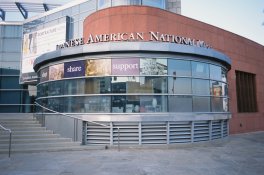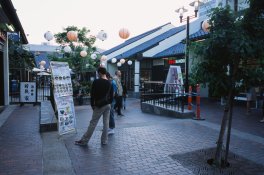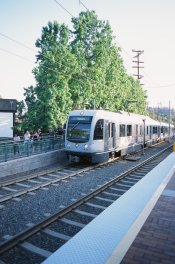Hello Drew,
I'm assuming you're referring only to modest levels of enlargement, Henning.
as I have very clearly written in my posting, I am referring to a 40x enlargement = 1 meter x 1,5 meter from 35mm film in projection on a projection screen. At that enlargement you don't see any grain from normal viewing distances in structured details. Grain is visible in even zones like the sky, but it is still very fine and not disturbing at all.
Grain is finer compared to Pro 400H, Portra 400, Ultramax, Superia 400 X-Tra prints of the same size.
As Nathan has written both Ektachrome E100VS and Provia 400X have a RMS value of 11, and indeed in projection they have a very similar grain appearance.
The projection of these films is something I am doing almost on a daily basis.
I love my pictures big, impressive, high-resolved and sharp. And with best colour brillance. Slide projection with excellent projection lenses is the best way to achieve this, it is unsurpassed in this respect.
We've also intensively tested all the ISO 400/27° films (and all the others, too

) under a microscope with 40x enlargement and 100x enlargement.
In the professional film range Provia 400X delivered the highest resolution (see also my first posting in this thread) with clearly separated 105 lp/mm (with Zeiss ZF 2/50, object contrast of 1:4) and best edge sharpness, followed by Pro 400H with 90 lp/mm and Portra 400 with 80 lp/mm.
Concerning grain 400X has a little bit finer grain than Portra 400 (the difference in grain is smaller than the difference in resolution and sharpness) and 400H (which has a bit coarser grain than Portra, but a bit higher resolution).
"Fine-grained for its speed" is not the same thing as fine
in the sense Astia 100F was.
Again, please read what I had written: I've clearly said Astia 100F is the colour film with the finest grain. Of course it is much finer grained and higher resolving than Provia 400X (see the test results in my first posting). That is not surprising, 400X has 4x the speed of Astia.
But 400X has a comparable grain level to E100VS.
How much photographers do you know who have complained about being E100VS a film with too much grain? I don't know anybody who has complained.
Therefore 400X is not only a very fine grained film in relative terms, for it's high speed, but it can also be considered a quite fine grained film in absolute terms.
I am using this film a lot in 135 and 120. And 35mm projected on 1m x 1,5m, which is my main format in projection, it is excellent. Fine grain (not visible in structured details from normal viewing distances), high resolution, excellent sharpness, wonderful colours.
And you obviously have a radically different definition of what constitutes a crisp print than I do.
I don't know what you consider a 'crisp' print. But I like my prints very 'crisp' in general (of course when it fits the subjects, some subjects look better soft printed).
Therefore I make often prints from the sharpest, highest resolving films available, Agfa Copex Rapid and Adox CMS 20 II. And from films like Retro 80S, Ilford PanF+, Delta 100, TMX, TMY-2. And in the colour range from Astia, Velvia, E100G and both Provias. CN film I mostly use when softer prints are needed fitting the subject better.
Best regards,
Henning








 ) under a microscope with 40x enlargement and 100x enlargement.
) under a microscope with 40x enlargement and 100x enlargement.





